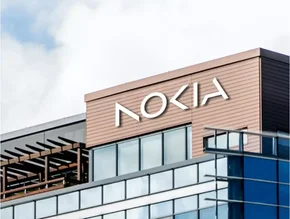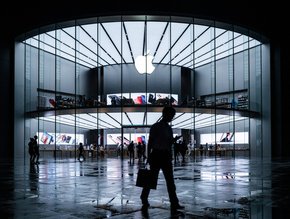5G, AI, Cyber: Gartner Explores MWC in Facts & Figures

Leading technology firm Gartner is not just attending MWC Barcelona 2024, but also working to demystify the many announcements we’re getting ready to hear over the next few days. The Connecticut based company delivers actionable, objective insight to executives and their teams around the world, all year round.
We’ve pinpointed the insights that are going to be most useful for anyone engaging in MWC content, including 5G, AI, and cybersecurity.
What can we look out for during MWC and beyond?
5G
Something we expect to hear a lot about at MWC Barcelona 2024 is 5G, the latest 3GPP cellular specification and the first that supports high throughput, low-latency fixed and mobile networking. Gartner agrees, with predictions of its continued growth — specifically that the share of enterprise sites using 5G as a primary or backup fixed wireless connectivity option will grow from 2% in 2023 to 15% in 2027.
Gartner’s 5G at a glance…
- 5G cellular wireless offerings use low-, mid- and high-band frequencies, and are based on different 3GPP standard versions. This variation causes confusion about what services are available from carriers for specific locations.
- Carriers have not uniformly adopted the more recent standard updates, which limits enterprises’ abilities to capitalise on 5G’s full feature set to meet their application needs at all locations.
- 5G data plans offer a range of options, including pooled and unlimited data usage, but some plans may reduce throughput at times of high network congestion.
- 5G’s improved bandwidth, latency and location capabilities are supporting expanded fixed and mobile Internet of Things (IoT) use cases.
The next major development of 5G is 5G-Advanced (also known as 5G-A), the midpoint between 5G and 6G. The technology is currently in the works, and Garnter suggests that this is the perfect time for companies to refresh 5G strategy, as we continue to gain clarity around the long term direction of 5G and the arrival of 6G, which is predicted to be around 2030.
In Figure 1, Gartner illustrates the cellular standards development timetable at a very high level.

Beyond 2026, the likely features of 5G and 6G are much less clear, as detailed plans haven’t yet been defined. However, some clues can be gleaned from 3GPP study items, which are intended to investigate the feasibility of new features, and from materials from academic and other sources discussing the likely goals of 6G. Figure 2 illustrates some of the features that might emerge in the longer term in 5G and 6G.

5G strategy isn’t something that can be safely devolved to individual business units or projects. Issues such as telco contracts and pricing, vendor selection, enterprise networking policies, and risk management are best managed centrally to ensure consistency. 5G strategy must also be aligned with other key technology strategies, such as edge and cloud strategy.
AI
As the world continues to experience the AI takeover, it is no surprise that the technology is sweeping the Mobile world. We’re seeing its impact globally, and naturally this includes employee experience, and work methods. Gartner says expect to see upskilling of high performing employees as effective use of AI and digital dexterity become desired CV attributes.
Gartner’s key predictions for AI and employee experience:
- By 2028, GenAI will be so tightly woven into personal and team productivity applications that it will scarcely merit comment by employees and will require little, if any, oversight.
- By year-end 2025, AI agents will attend over 25% of virtual and hybrid meetings, causing a shift in attendance and engagement by humans.
- By 2028, enterprises will enhance productivity by replacing 60% of SaaS workplace applications that lack GenAI-driven capabilities with those that do.
- By 2026, 50% of governments worldwide will enforce use of Responsible AI through regulations, policies and the need for data privacy.
- By 2027, organisations will shift 80% of marketing content spend to GenAI services, but effectiveness will plummet by 50% due to overwhelmed consumers.
In the world of cybersecurity, Gartner predicts positive disruption in the long term, and disillusions in the short-term. Whilst 2023 was the year of GenAI announcements, 2024 should be the year of minimum viable products, and 2025 might be the first year of GenAI integration in security workflows delivering real value.
Gartner’s key predictions for AI and cybersecurity:
- By 2028, multiagent AI in threat detection and incident response will rise from 5% to 70% of AI implementations to primarily augment, not replace staff.
- Through 2025, generative AI will cause a spike of cybersecurity resources required to secure it, causing more than a 15% incremental spend on application and data security.
- By 2026, 40% of development organisations will use the AI-based autoremediation of insecure code from application security testing vendors as a default, up from less than 5% in 2023.
- By 2026, attacks using AI-generated deepfakes on face biometrics will mean that 30% of enterprises will no longer consider such identity verification and authentication solutions to be reliable in isolation.
- By 2028, the adoption of generative augments will collapse the skills gap, removing the need for specialised education from 50% of entry-level cybersecurity positions.
AI impact on IT infrastructure and operations is set to continue, with GenAI accelerating the learning curve for junior team members and empowering senior team members with advanced insights and automation capabilities
Gartner’s key predictions for AI in IT infrastructure and operations:
- By 2028, GenAI technology will be used for 35% of network configuration and troubleshooting activities, up from near zero in 2023.
- By 2027, GenAI will create more IT support and knowledge-based articles than humans will.
- By 2027, more than 40% of digital workplace operational activities will be performed using management tools that are enhanced by GenAI, dramatically reducing the labour required.
- By 2026, more than 90% of IT operations management vendors will have embedded GenAI capabilities in their products and/or services, up from less than 5% in 2023.
- By 2026, 90% of organisations will suffer more than 10 production-impacting events annually due to insufficient GenAI skills and testing investments.
Cybersecurity
As AI continues to make waves throughout industry, the need for increased defence for increasingly valuable digital assets expedites. Garnter sees the trend for reforming security operating models reform persisting, projecting end-user spending for the information security and risk management market to reach US$209bn in 2024. Regionally, North America security and risk management end-user spending will represent 50% of overall security and risk management end-user spending in 2024, followed by Western Europe at 24%.
************
Want to see more content on these topics? We will be covering plenty of announcements and partnerships this week on Mobile Magazine.
You can check our sister publications for more content: Technology Magazine, AI Magazine, Data Centre Magazine, and Cyber Magazine.
************
Want to speak with us at MWC Barcelona 2024? Hurry, as interview slots are limited. Secure yours now! Reach out to us today: [email protected]
**************
Make sure you check out the latest industry news and insights at Mobile Magazine and also sign up to our global conference series - Tech & AI LIVE 2024
**************
Mobile Magazine is a BizClik brand






